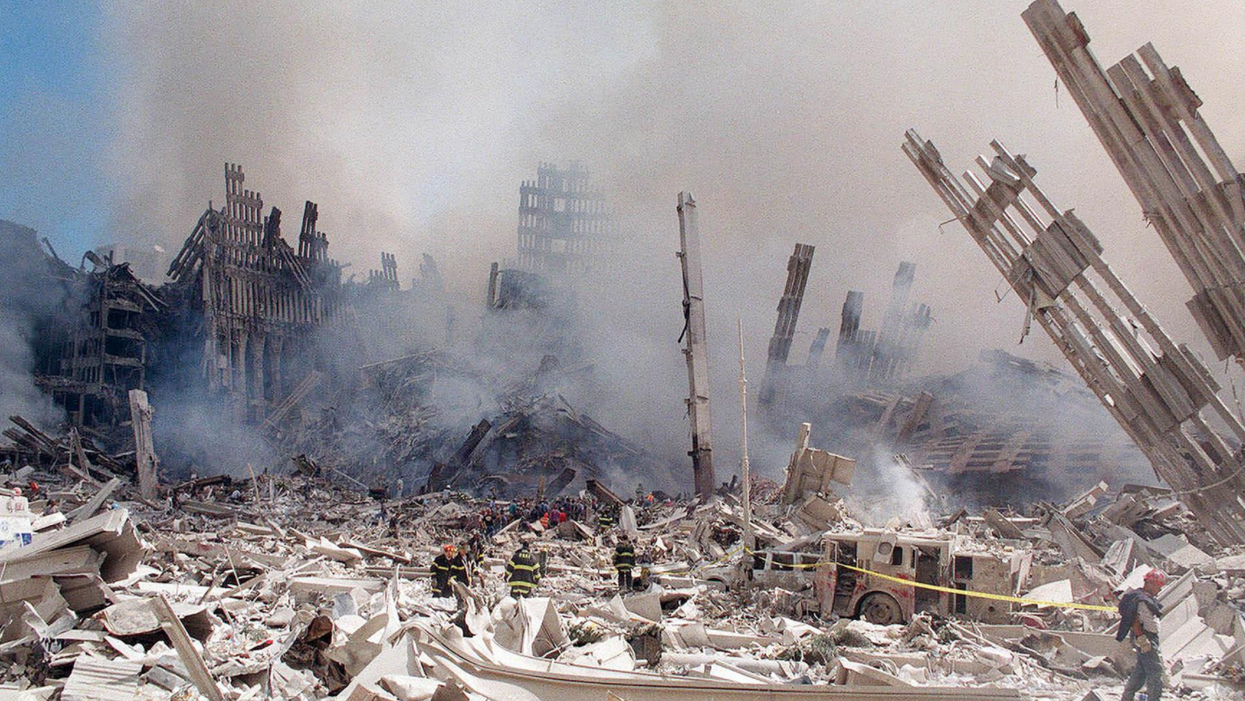After 20 Years, Holding Giuliani Accountable For Post-9/11 Toxic Air Debacle
Reprinted with permission from The Chief-Leader
The chairs of both the House Oversight Committee and the House Judiciary Committee have written to New York Mayor Bill de Blasio requesting that he release any documents in the city's possession pertaining to what officials knew about the air quality in and around lower Manhattan in the days and weeks following the September 11, 2001 destruction of the World Trade Center by terrorists.
The Congressional inquiry comes as the 9/11 Victim Compensation Fund reported it had received 3,900 death claims related to WTC health conditions and the Centers for Disease Control and Prevention stated that 3,311 people enrolled in its WTC Health Program have died.
In their September 20 letter, Oversight Committee chair Rep. Carolyn B. Maloney (D-NY) and Judiciary Committee chair Rep. Jerrold Nadler (D-NY), who co-sponsored the James Zadroga 9/11 Health and Compensation Act, wrote that disclosure was critical to "help provide injured and ill 9/11 responders, survivors, and their families a better understanding of what the City knew at the time about the likely scope of the health crisis and when they knew it."
The de Blasio administration responded with a statement: "As we continue to remember both those that died on 9/11 and those that passed away years later from toxic dust, we will not forget the lessons we learned that day. We will review the letter."
Three days after the 9/11 attack, Christine Todd Whitman, then-head of the U.S. Environmental Protection Agency, told reporters that "the good news continues to be that air samples we have taken have all been at levels that cause us no concern." Two years later, an investigation by the EPA Inspector General found that the agency "did not have sufficient data and analyses to make such a blanket statement" when it did.
Bush Doctored Releases
"Air-monitoring data was lacking for several pollutants of concern," the inspector general concluded. The report stated that President George W. Bush's White House Council on Environmental Quality heavily edited the EPA press releases "to add reassuring statements and delete cautionary ones."
The IG also found that the Council described the readings as just "slightly above" the limit, despite the fact that samples taken indicated asbestos levels in lower Manhattan were double or even triple the EPA's limit.
When the agency watchdog tried to determine who had written the press releases, investigators "were unable to identify any EPA official who claimed ownership," because they were told by the EPA chief of staff that there was "joint ownership between EPA and the White House," which gave final approval.
Reps. Maloney and Nadler cited those findings in their recent letter to the mayor. "This report outlined what the federal government knew about the extent of the problem and the clear health threat, after the EPA Administrator Christie Todd Whitman had repeatedly said that the 'air was safe to breathe,'" they wrote. "However, we have yet to see a full accounting of what then-Mayor Giuliani and his administration knew at the time."
The Congressional leaders linked their inquiry to "President Biden's ongoing review and declassification of documents related to the Kingdom of Saudi Arabia's possible involvement in the 9/11 attacks" and the need for "full transparency" about just "what the government knew about the health risks at Ground Zero" and whether it "potentially covered up that information."
"While previous reports have hinted at what the Giuliani administration knew about the health risks, it is time for a complete accounting of this history," Ms. Maloney and Mr. Nadler wrote. "If it is true that they knew that thousands of responders and community members would face tremendous long-term health impacts, the administration unnecessarily delayed the effort to provide health care to the thousands of responders and survivors exposed in the aftermath on the pile and in schools, offices, and homes around the area."
Health advocates from first-responder unions and the lower Manhattan neighborhood supported the call for the city to disclose all documents it has related to what it knew about the air quality in and around the site.Ultimately, Federal officials defined the WTC health impact zone to encompass all of lower Manhattan south of Houston Street and portions of western Brooklyn.
'Can't Repeat Mistakes'
Kimberly Flynn, the executive director of 9/11 Environmental Action, and Rob Spencer, director of media services for the Organization of Staff Analysts, who co-chair the WTC Health Program Survivor Steering Committee, wrote: "In the earliest days after the collapse of the towers, the City rather than the federal government led the initial disaster response. In addition, the City Department of Health issued hazardous guidance to those who lived or worked in Lower Manhattan below Canal Street, such as a recommendation to clean up potentially asbestos-contaminated dust in interior spaces using a wet rag and a mop. Respiratory protection was not mentioned."
They continued, "For these reasons and many more, Representatives Maloney and Nadler's request for full disclosure by the City of information about its decision-making and the origins of its guidance is welcome and the release of the information long overdue. We need to understand the failures of decision-making after 9/11 that led to decades of suffering and illness. Going forward, we cannot afford to repeat these mistakes."
Lila Nordstrom, who attended Stuyvesant High School adjacent to the WTC site and is a WTC Health Program participant, wrote, "This was not just a critical issue in the immediate aftermath but was an ongoing failure that continued into Mayor Bloomberg's tenure."
During a September 21 phone interview, former Uniformed Firefighters Association President Stephen Cassidy said he welcomed full disclosure of what the city knew about the air quality following the Trade Center's destruction.
'Knew It Wasn't Safe'
"In my view there wasn't a single Firefighter who thought the air was safe to breathe, but in those first eight to nine days, we thought we would still find people alive," Mr. Cassidy said. "But when it shifted from an actual rescue to [the months of] recovery, there is a legitimate argument that the city agencies did not provide the proper adequate protective gear. You had guys wearing cloth bandannas and those flimsy masks."
"We all know now the air in Lower Manhattan on 9/11 and in the months that followed was poison to breathe—but it is imperative that it is made clear what was known then," said Detectives' Endowment Association President Paul DiGiacomo. "We owe it to the detectives, their fellow first-responders, and every person who has died of a related illness or continues to battle for their life today."
Transport Workers Union Local 100 President Tony Utano stated, "Nothing should be left in the shadows. Thousands of us worked the pile at Ground Zero, helped evacuate people from lower Manhattan, or shuttled other first-responders to the site. They were told the air was safe and many have the paid the price of that lie. Hundreds have become seriously ill and dozens have died."
Vincent Variale, president of AFSCME Local 3621, which represents Emergency Medical Service Officers, said, "It seems they might be doing this for political reasons, particularly because it involves former Mayor Giuliani. But that said, they should investigate this and hold people responsible."
Nadler recalled at a recent 9/11 memorial that he "immediately" pushed back on the EPA's assurance about air quality at the time, explaining, "I knew immediately that this was ridiculous—you could just take one look and there was zero evidence that this was true."





